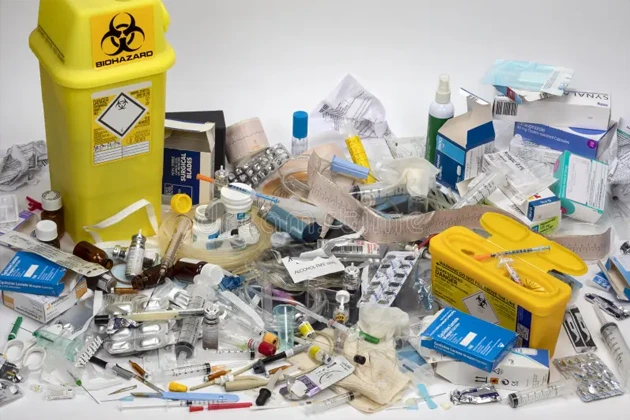In an age of advanced medicine and widespread pharmaceutical use, the question of what happens to unused, expired, or contaminated medications is becoming increasingly urgent. While prescriptions and over-the-counter medications improve health and prolong life, they also generate a growing volume of waste. This waste, if not handled correctly, can contaminate ecosystems, harm public health, and lead to regulatory violations. That’s where pharmaceutical waste disposal comes into play—a vital process that ensures medications are discarded in a way that’s safe, compliant, and environmentally responsible.
Many people are unaware of the scale and seriousness of pharmaceutical waste. From large hospitals and pharmacies to nursing homes, veterinary clinics, and even households, pharmaceutical waste is generated in vast quantities. Improper disposal, such as flushing pills down the toilet or tossing them in the trash, can result in water pollution, soil contamination, and even the development of antibiotic-resistant bacteria.
This article explores what pharmaceutical waste is, why its proper disposal matters, how it’s handled in various sectors, and what steps organizations and individuals can take to manage it responsibly.
What Is Pharmaceutical Waste?
Pharmaceutical waste includes any medicinal products that are expired, unused, damaged, or no longer needed. It covers both human and veterinary medicines and can exist in various forms—solid, liquid, aerosol, and semi-solid.
Common Types of Pharmaceutical Waste:
- Expired medications
- Unused or leftover drugs
- Contaminated packaging or delivery systems (e.g., IV bags, syringes)
- Partially used prescriptions from patients
- Chemotherapy drugs and cytotoxic agents
- Controlled substances under regulation
- Recalled medications
- Waste generated during drug manufacturing or compounding
While some of this waste may seem harmless, the reality is that pharmaceutical compounds are biologically active. They are designed to produce effects at low doses, making even trace amounts potentially dangerous if they reach unintended targets like wildlife, water sources, or people.
Why Is Proper Pharmaceutical Waste Disposal So Critical?
The improper disposal of pharmaceuticals poses a wide array of risks, affecting everything from public health to ecological balance. Here’s why correct pharmaceutical waste disposal is essential:
1. Environmental Protection
Flushing medicines down the toilet or pouring liquid drugs down the sink can introduce pharmaceutical compounds into waterways. Wastewater treatment plants are not equipped to remove all drug residues, which means these substances can enter rivers, lakes, and oceans. Studies have shown the presence of antidepressants, painkillers, and hormones in aquatic environments, where they disrupt marine life and reproductive systems in fish.
2. Public Health and Safety
Leaving medications accessible in trash bins can lead to accidental poisonings, particularly among children or pets. There’s also the risk of drug abuse or theft when medications, especially controlled substances like opioids, are not properly destroyed. Misuse of discarded drugs continues to fuel addiction and overdose rates.
3. Antibiotic Resistance
Improper disposal of antibiotics contributes to the development of antibiotic-resistant bacteria. These “superbugs” are harder to treat, more expensive to manage, and a growing threat to modern healthcare.
4. Legal Compliance
Regulatory agencies impose strict rules on how pharmaceuticals must be disposed of. Healthcare providers and pharmaceutical companies must adhere to hazardous waste regulations, or they risk facing fines, lawsuits, and reputational damage. Effective pharmaceutical waste disposal helps ensure legal and ethical compliance.
How Pharmaceutical Waste Is Classified
To determine the appropriate disposal method, pharmaceutical waste is typically classified into several categories:
- Non-hazardous pharmaceutical waste – Includes most over-the-counter drugs and some prescription medications.
- Hazardous pharmaceutical waste – Includes drugs that are flammable, toxic, reactive, or corrosive. Examples include certain chemotherapy drugs and hormonal treatments.
- Controlled substances – Regulated by drug enforcement agencies due to their potential for abuse.
- Cytotoxic and cytostatic waste – Includes cancer treatment drugs and must be treated with extreme caution.
- Sharps containing pharmaceuticals – Syringes, autoinjectors, or IVs that still contain medication residues.
The classification determines how the waste must be stored, labeled, transported, treated, and ultimately destroyed.
Pharmaceutical Waste in Different Sectors
Pharmaceutical waste isn’t just generated by hospitals. It comes from a wide range of sources, each with unique disposal needs:
1. Hospitals and Clinics
These facilities generate large volumes of pharmaceutical waste through treatments, surgeries, and prescriptions. Strict waste management protocols are essential to avoid contamination and ensure patient and staff safety.
2. Pharmacies
Pharmacies handle expired stock, customer returns, and damaged medications. They also often serve as public collection points for unwanted medications.
3. Nursing Homes and Assisted Living Facilities
Long-term care settings often deal with large amounts of partially used medications, especially after a resident is discharged, passes away, or changes prescriptions.
4. Veterinary Clinics
Veterinary pharmaceuticals can be just as dangerous as human medications when improperly discarded. Animal care settings must adhere to the same safety and environmental standards.
5. Households
Millions of households store expired or unused medications, and many people unknowingly dispose of them incorrectly. Public education and collection programs are critical to reducing household pharmaceutical waste.
Common Disposal Methods
Effective pharmaceutical waste disposal involves a variety of treatment and destruction methods, depending on the type and classification of the waste.
1. High-Temperature Incineration
Hazardous and cytotoxic pharmaceutical waste is typically destroyed via incineration at very high temperatures. This method ensures complete neutralization of dangerous chemical compounds.
2. Chemical Deactivation
Some pharmaceuticals can be rendered inert by chemical neutralization. This process breaks down active ingredients so they can no longer produce biological effects.
3. Encapsulation
Waste is placed into secure, leak-proof containers and encased in an immobilizing material (such as concrete). This is commonly used in areas without access to incineration.
4. Return-to-Manufacturer Programs
Some pharmaceutical manufacturers offer take-back or reverse distribution programs to handle expired or unsellable medications safely.
5. Drug Take-Back Programs
Public drop-off sites and special collection events allow individuals to return unused or expired medications to authorized collection points for safe disposal.
Best Practices for Pharmaceutical Waste Disposal
Managing pharmaceutical waste properly involves more than just choosing the right disposal method. It requires a full lifecycle approach, from the moment a drug enters a facility to its final destruction.
Key Best Practices Include:
- Segregation at source: Waste should be separated into hazardous and non-hazardous categories immediately.
- Proper labeling: Containers must be clearly marked to avoid cross-contamination or mishandling.
- Secure storage: Waste should be stored in tamper-proof, leak-proof, and sealed containers.
- Trained personnel: Staff must be educated on regulations, waste handling, and emergency procedures.
- Documentation and tracking: Maintaining a clear audit trail helps with regulatory compliance and quality assurance.
- Regular audits: Conduct internal reviews to identify inefficiencies or risks in the current disposal process.
Organizations that adopt these best practices not only reduce their environmental impact but also demonstrate a commitment to public health and corporate responsibility.
Challenges in Managing Pharmaceutical Waste
Despite increased awareness, several challenges continue to hinder safe pharmaceutical waste disposal:
- Lack of public education: Many people are unaware of the dangers of improper disposal or don’t know about drug take-back options.
- Complex regulations: Rules can vary significantly depending on waste classification and jurisdiction, making compliance difficult for smaller providers.
- High costs: Safe disposal can be expensive, especially for facilities generating high volumes of hazardous waste.
- Storage limitations: Facilities with limited space may struggle to store waste securely before transport.
- Counterfeit or illicit returns: Handling drugs with unknown origins adds another layer of complexity and risk.
Addressing these issues requires government support, public-private partnerships, and ongoing innovation in waste treatment technologies.
Moving Toward a More Sustainable Future
With environmental sustainability becoming a global priority, there’s increasing pressure to make pharmaceutical waste disposal more eco-friendly. Biodegradable packaging, smart inventory systems that reduce expired stock, and green chemistry are just a few of the trends shaping the future.
Technological innovations like automated drug disposal kiosks, AI-driven inventory tracking, and environmentally benign drug formulations are expected to become more prevalent in the coming years.
Conclusion
Pharmaceutical waste is an inevitable byproduct of modern medicine—but it doesn’t have to be a threat to public health or the planet. By embracing safe, compliant, and effective pharmaceutical waste disposal, organizations and individuals can play a critical role in preventing pollution, minimizing drug misuse, and protecting ecosystems.
The path forward involves more than just following the rules; it requires a shift in how we think about medicine as a whole. From the manufacturer to the end user, everyone shares a responsibility to ensure that medications not only heal—but never harm.



































